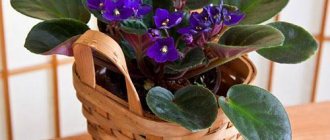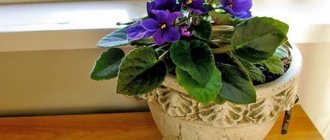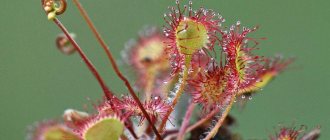Violet NK-Raffaello (N. Kozak)
Violet NK-Raffaello belongs to the genus of hybrid Saintpaulias of the Gesneriev family , also known as Uzambara violet.
The variety was bred in 2014 by a young but already famous breeder from Odessa Natalya Kozak . The name of all varieties created by her begins with the prefix NK, that is, Natalya Kozak. She collected Saintpaulias for many years, and in 2007 she decided to create new varieties herself.
Pollination was carried out on the mother violet variety EK-Sea Wolf in 2014 and in March 2015 the variety NK-Raffaello was presented at the exhibition.
EK-Sea Wolf.
The mother plant blooms with large, semi-double, wavy, bright blue stars . Petals with variable mesh. The leaf blades are dark green.
The bred violet NK-Raffaello is a medium standard with snow-white, double, huge, about 8 cm, flowers. The edges of the petals are very corrugated.
The flowers open with a green impregnation in the center , which, as they grow, gradually dissolves, giving the bouquet a unique freshness. They have a dense texture.
A neat exhibition rosette with medium-sized green leaves forms itself.
Attention! Over the 5 years of the variety’s existence, he never went into sports.
Home care
Caring for the NK-Raffaello variety is the same as for other Uzambara violets.
Conditions, pruning and hygiene
In order for Saintpaulia to feel good in the apartment, grow and delight with abundant flowering, you need to follow simple rules:
- Do not overfill and overdry;
- keep in direct sun;
- allow the air temperature to rise above 30°C.
Old leaf plates and stepsons must be removed so that the rosette does not thicken, but is smooth and beautiful.
It is necessary to ensure that dust does not accumulate on the leaves; to do this, the violet must be washed in the shower.
The Saintpaulia is put in place only after the leaf plates have completely dried. Otherwise, burns in the form of yellow spots may appear on the delicate leaves.
Proper watering and fertilizing
It is very important to maintain the optimal watering regime . If the soil is allowed to become too moist, the root system and stem of the violet will begin to rot and the plant will die. When the soil is overdried, the leaves of Saintpaulia begin to lose turgor, the flowers wither, and then the death of the root system occurs.
The NK-Raffaello variety, like other violets, can be watered:
- from above , in a thin stream along the edge of the pot, make sure that water does not get on the leaves;
- through the pan until the earthen clod is completely wet, after which the excess water must be drained;
- adult plants can be kept on a wick.
Wick watering.
Watering is carried out when the top layer of soil dries out.
Attention! Due to the fact that the NK-Raffaello violet grows quickly, it will not be possible to feed it until it becomes an adult. Saintpaulia has to be replanted once every 2-3 months, so it does not have time to use the nutrients.
Adult specimens should be fertilized with specialized fertilizers marked “For violets . The first application of fertilizers is carried out 3 months after transplanting Saintpaulia into fresh soil.
If the planting substrate does not contain organic fertilizers, Saintpaulia can be fed within a month.
Lighting and temperature
One of the prerequisites for growing healthy NK-Raffaello violets is lighting. But there shouldn't be a lot of it.
As soon as the peduncles appear, it is better to reduce the light intensity, otherwise you will not get a full cap flowering - the short peduncles will be hidden under the upper leaves.
The NK-Raffaello variety is ideal for northern windows and growing on shelves with one fluorescent lamp.
The optimal temperature for keeping this flower is 18-23°C. The cooler it is, the longer the flowering period and the larger the buds.
Effect of air humidity
Increased air humidity helps Saintpaulia survive at high ambient temperatures. To survive the heat, air humidity for young violets should be 50-60%; for adults, 30-40% is enough.
To raise it, you should not spray the plant , as this will create a short-term effect and may spoil the decorative appearance of the leaves and flowers.
A more lasting result is achieved by placing the pot with the plant on a tray with damp expanded clay or moss.
It’s even better to place plastic bottles with frozen water between the violets. This simultaneously reduces the temperature and increases air humidity, while preventing damage to the flowers and leaves of Saintpaulia.
Reproduction methods
The NK-Raffaello variety is propagated in the same ways as all plants of the Gesneriev family:
- stepchildren;
- sheet plates;
- cuttings;
- children who grew up on hemp after the rejuvenation of the mother plant. At the same time, you don’t have to be afraid that the violet will go into sports.
Soils
The substrate for Saintpaulia should be light, loose and breathable.
Important! The basis of the soil for planting the NK-Raffaello variety is high-moor peat with the addition of river sand.
Nevertheless, Saintpaulia can also be planted in ready-made soil from the store marked “For violets .
Ready-made soils for violets.
If you make soil based on soaked peat tablets or coconut substrate with the addition of river sand, perlite or vermiculite, then you should add a little dry ground horse excrement as a nutrient organic matter.
Before planting, the soil is calcined in the oven for 30 minutes and sifted.
Rules for transplantation and rejuvenation
For an adult violet of the NK-Raffaello variety, a pot with a diameter of 7 cm . It is best to take a plastic one, since in a ceramic one the root system will either overheat or become very cold.
Expanded clay or small pebbles must be poured onto the bottom Then some prepared soil. If the plant grows on a wick, then drainage is not required.
If this is a planned transplant , then:
- Before the procedure, the plant needs to be watered a little - wet roots are less injured;
- Remove the Saintpaulia from the pot and carefully shake off the old soil;
- Remove the lower leaves, sprinkle the removal areas with activated carbon;
- Place the violet in the pot so that the bottom row of leaf plates of the rosette does not reach 1-2 mm from the edge of the container;
- Fill with soil, tapping the pot on the table so that the soil fills all the voids;
- Spill thoroughly, let the water drain completely, cover with a bag or plastic bottle, and place in a bright, warm place for several days.
In the case when the violet has become large and the bottom of the trunk is left without leaves, the plant must be rejuvenated . To do this, without removing the plant from the pot, cut off the top of the Saintpaulia with scissors.
Advice! Sprinkle the stump remaining in the pot with activated carbon. It will subsequently grow into children that fully retain the varietal characteristics of the mother violet.
Remove the bottom layer of leaves from the crown, giving it symmetry. Using a sharp, disinfected knife, carefully scrape off the woody layer and let it dry for a few minutes. You can root the crown:
- in the ground;
- in water;
- in wet perlite.
Rooting in water.
Stick the violet into a glass with soil or perlite. Place in a plastic bag for 3-4 weeks. After the roots grow to a length of 2-3 cm, transplant the Saintpaulia to a permanent place of residence.
Difficulties in growing
Babylon violet is often attacked by diseases and pests:
- powdery mildew. Appears due to poor care and excess nitrogen in the soil, the leaves become covered with a white coating, and the flower slows down its growth. It is treated with fungicides such as “Fundazol”, “Topaz”, and removal of affected foliage. For prevention, the soil is treated with Previkur, Thanos, and the content of potassium and phosphorus in the soil is controlled;
- rust. Occurs due to insufficient lighting and reduced plant immunity. Red spots appear on the outside of the leaf, and fungal pustules appear on the inside. During treatment, the affected leaves are torn off, the flower is isolated and treated with fungicides “Fitosporin-M”, “Topaz”;
- root rot. They arise due to lack of drainage, poor soil, soil cooling, and excessive watering. The problem is solved by transplanting into a new container with new soil and first removing the affected part of the roots;
- spider mite. Appears due to very dry indoor air. Its presence can be determined by the thin white web enveloping the flower. Destroys the pest with an infusion of onion peels or acaricides “Apolo”, “Neoron”;
- scale insect. It is activated by a lack of light and low temperatures, appearing as brown sticky spots. Adults are destroyed by wiping the foliage with a cotton swab dipped in “Aktellika”, “Aktar”;
- thrips. They appear when the temperature rises and the humidity drops. Destroyed by washing the foliage under running water, immersing the rosette in a bowl of soapy water for 10 minutes and treating with Fitoverm-M and Aktara;
- mealybug. It attacks when the rules for the care and maintenance of the plant are violated. A sign of its vital activity will be a white coating on the foliage. To combat the pest, soapy water is used, in which a swab is moistened and the foliage is wiped with it;
- aphid. Appears if the soil has been contaminated and has not undergone the disinfection procedure. The appearance of the pest can be determined by honeydew and wilting of the plant. Expel the pest with a water shower or by wiping the foliage with a soap solution.
If you become the owner of this magnificent flower, then pay more attention to it, and then it will thank you with beautiful blooms.
Did you know? Violets are often given the scientific name Saintpaulia.
This plant is often called Uzambara violet by gardeners, and in appearance it is very similar to other violets. In fact, violets and Saintpaulia belong not only to different families, but also to different orders. The hybrid breeder even advises all flower growers, when caring for the Babylon violet, to talk to it as if it were a living being.
Features of flowering, growth and reproduction
At home, under optimal conditions, the NK-Raffaello variety initially grows quite quickly - small violets have to be transplanted into a larger container every 2-3 months . The first flowering occurs after 8-10 months.
Transfer of varietal characteristics
There are no difficulties in propagating the NK-Raffaello violet . Since Saintpaulia does not go into sport, there is no need to wait for it to start growing stepsons; a leaf plate or cutting . But if you grow a violet from a stepson, flowering will occur faster.
Planting material is removed from the mother Saintpaulia or cuttings after their rosettes of children have reached a diameter of 1.5-2 cm. They are placed for rooting in soil, water or perlite, first treating the bottom of the trunk with “Kornevin”.
If rooting was carried out in a substrate, then the plant is transplanted into a larger pot when the roots completely entwine the entire earthen ball. We must remember that the container for the violet should be 1/3 of the diameter of the outlet.
Optimal pot sizes for violets.
When rooting occurs in water or perlite, then after growing roots, after 1.5-2 months, Saintpaulia is transplanted into small 50 ml cups to build up a full-fledged root system.
Flowering variety
The violet blooms most readily and blooms longer when the temperature at night is +18°C and during the day +23°C. Flowering lasts up to 2 months , which is quite a long period for white-flowered Saintpaulias.
Under optimal conditions, a cap of huge snow-white flowers blooms above a small rosette. Heat primarily affects flowering - the buds become smaller and do not last long.
Attention! Saintpaulia's peduncles are short, capable of holding up to 5 huge flowers. To ensure that the peduncles stretch out and the flowers do not hide under the upper leaves, the violet is placed in a more shaded place or the light output is reduced while the arrow is growing.
How to propagate
Violets are usually propagated by cuttings. This is the simplest and most effective way. A leaf is used as a cutting. Maybe one that was cut off due to the fact that it lost its decorative effect. It is placed in water and waiting for roots to appear.
When they are at least a centimeter long, you can plant the cuttings in the soil. Planting should be done very carefully, as the roots are fragile and can easily be broken. The leaf should be buried in the soil not vertically, but at an angle of 45°. Cover the top of the container with a plastic cup or jar.
Important! There is no need to remove the shelter until new leaves appear.











